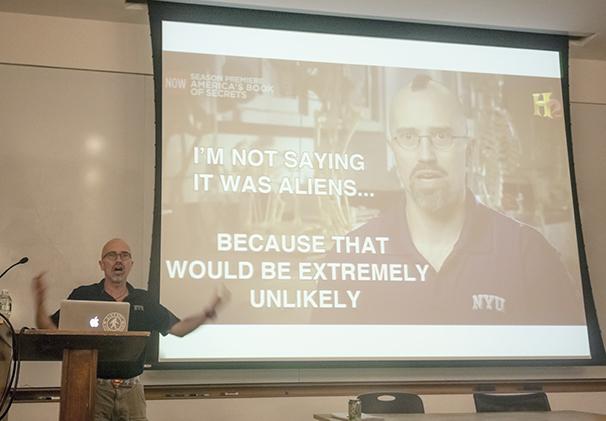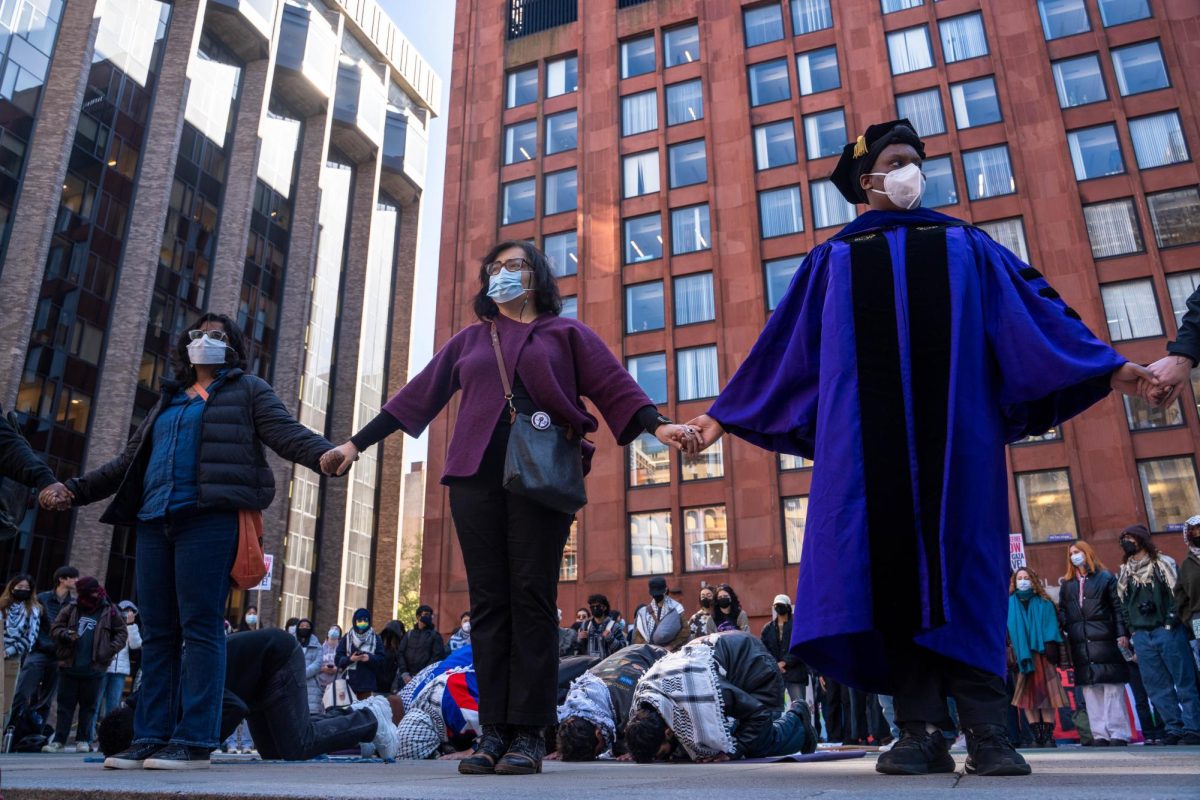Prof explains genetics, Bigfoot
May 1, 2014

Todd Disotell has traveled all around North America in search of Bigfoot, but yesterday he came to NYU to discuss his research on conservation genetics for primates.
The anthropology professor emphasized the power of modern DNA technology in conservation efforts and explained how sequencing DNA of various primate species better classifies them.
“It’s applying DNA analyses and techniques to try to identify either new species or subspecies, or to clarify to what species or subspecies a particular population [belongs],” Disotell said, adding that officially naming species is crucial for their conservation because they cannot be legally protected until they are identified.
Disotell uses secondary sequencing technology to compare closely related organisms and clarify their taxonomic classification.
He said although there is no specific amount of genetic difference distinguishing two species, genetic sequencing is a method researchers use to determine classifications. During this process, researchers compare the difference between the two species under scrutiny with that of two established, distinct species. If the difference is greater between the two studied species than the two comparison species, then it is likely that they are different species.
Disotell samples the animals’ DNA at a distance to avoid human-primate contact.
Sharon Ng, a junior research scientist at NYU’s Center for Neural Science, said she was surprised by Disotell’s methods.
“It’s amazing how many species can be tracked and discovered just by extracting and sampling the environment around us,” Ng said.
Disotell showcased his passion for and knowledge of sequencing primate DNA in “10 Million Dollar Bigfoot Bounty,” a television show that details the search for a hairy hominid called Bigfoot living in North American forests. He created a portable lab in which he sequenced DNA of collected biological samples and found that most of them were bears.
Christina Yeung, who attended the discussion, said Disotell’s research is evidence that technology is quickly advancing.
“It’s amazing that technology has brought us this far as opposed to [believing] the whole bigfoot scam,” Yeung said. “What they have in [the Center for Genomics and Systems Biology] is incredible.”
A version of this article appeared in the Thursday, May 1 print edition. Claire Scimeca is a contributing writer. Email her at [email protected].












































































































































Steven Gallagher-Skinner • May 23, 2014 at 4:31 am
We drove from Vancouver to Seattle and after we stayed with a friend, he said he has a mountain house – close to Mount Rainer. Where sightings of Bigfoot are common. Never in a million years did we believe that we would encounter anything. After driving for 3 hours, we finally arrived at a posh mountain house. There was room for all of us. Second night, we were all around a camp fire, about a 100 yrds from the house, it was night and the stars were bright. We talked about ghost stories, some made up but entertaining nonetheless. We suddenly heard something huge making it’s way through the woods. Allan had a shot gun, but it was in the house. Two of us had camera’s. Then there was an ominous smell. Plus, I felt that there was something watching us. Then, from out of the woods, a huge rock was thrown and landed exactly on the fire, burning logs flew everywhere. David covered me and quickly got me into the 4 by 4, and locked us in it.We started the vehicle and drove up to the house where one of our group was hit in the head by a burning cinder, he was alright. But then, we heard it in the woods and we all went inside. Allan loaded his rifle, two of us – went after it. (The Alpha Males – plus David, went after it!) They returned with various stories, whatever it was – had red eyes, and glowed! We took several pictures, it wasn’t Bigfoot – but it was night creature, some say it might of been a werewolf – or a spirit of something intensely evil. In the morning, the 4 by 4 was hit numerous times by huge rocks and a log was preventing us from leaving. Allan had a chainsaw and cut it apart. We weren’t spending another night. But I tell ya, it was the freakiest thing I ever encountered!
Bigfoot Gifts & Toys • May 5, 2014 at 10:15 am
It takes a lot of studies to figure out the genetics history of Bigfoot.